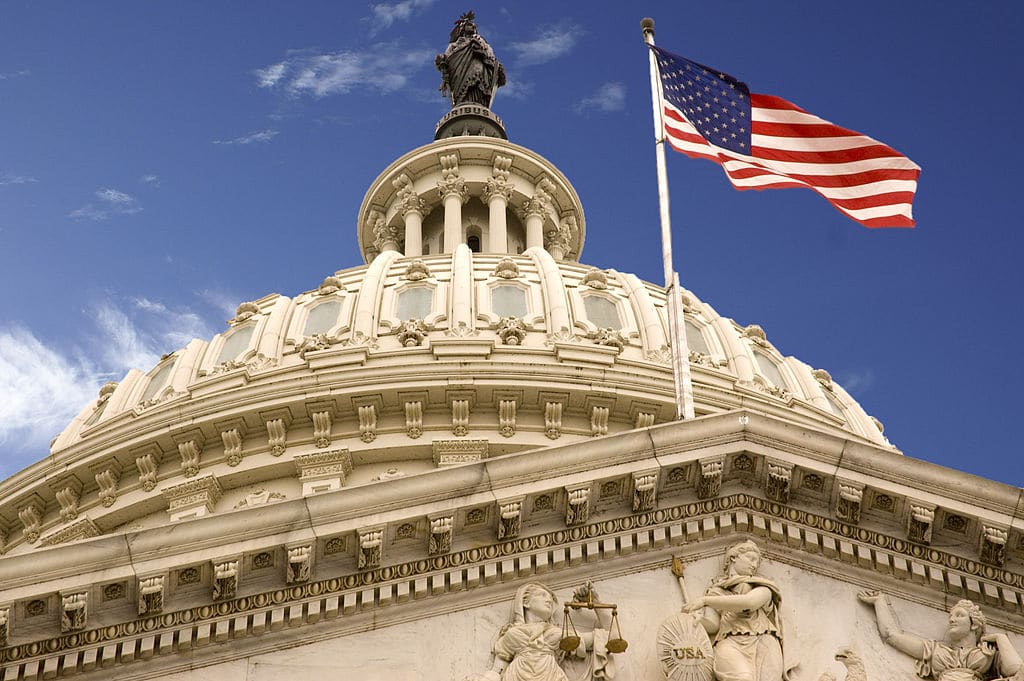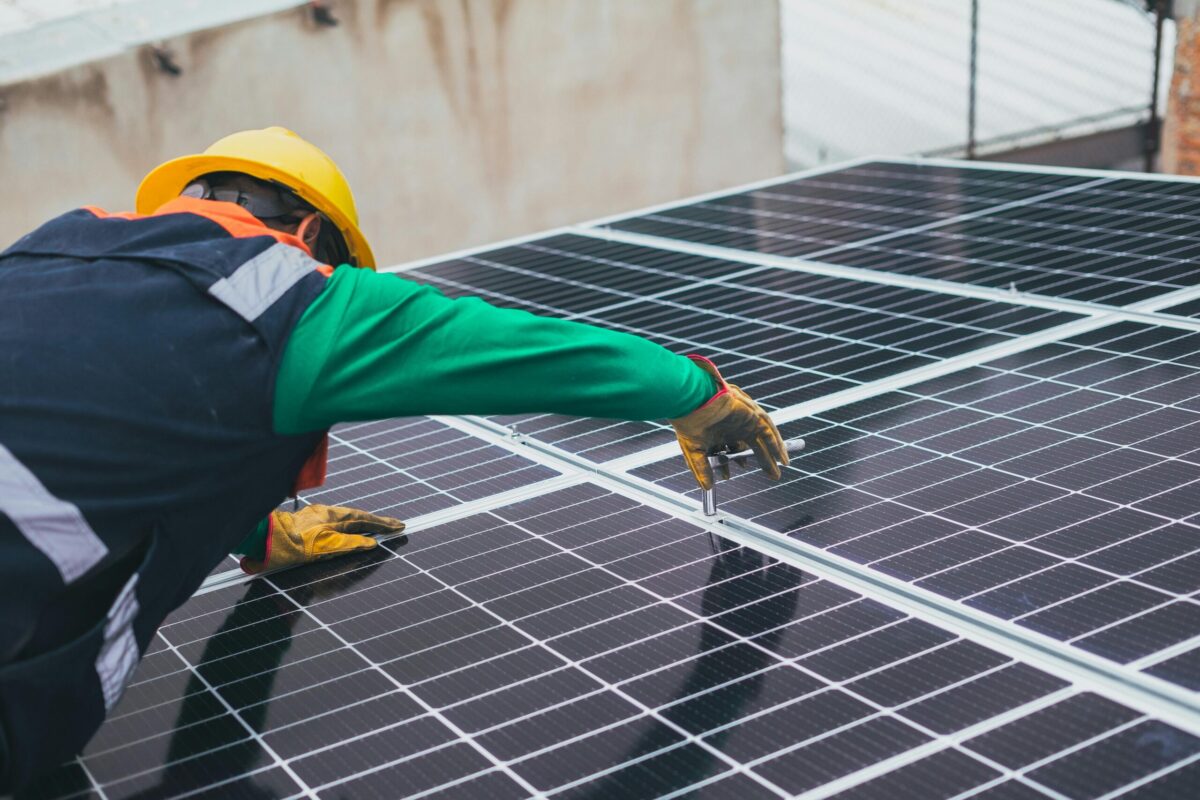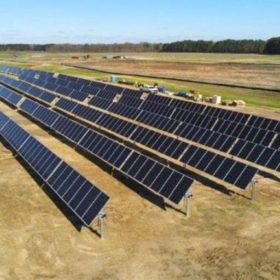The calendar may read mid-summer, but congressional watchers are looking ahead to December as the end-game for action on an infrastructure bill that likely will have long-term benefits for the solar industry.
In the thread-the-needle world of the evenly divided Senate, success or failure may hinge on the actions of two senators and one gatekeeper whose name you may have never heard.
“This is a once-in-a-generation type of bill” in terms of its dollar size and scope of issues, said Rhone Resch, president and chief revenue officer for Solarlytics, and for 12 years president of the Solar Energy Industries Association. The infrastructure bill — really a handful of separate bills — “will suck the air out of Washington for an extended time,” he said. Resch made his comments during a June 20 webinar hosted by Roth Capital Partners.
(Read “SEIA issues a call to advocate for the Biden infrastructure bill.“)
The bills include a $1.2 trillion version that a bi-partisan group of Senators agreed to in principle in June, along with the Biden Administration. Earlier, the House of Representatives passed a $715 billion bill. And, depending on what happens over the next several weeks, a so-called “reconciliation bill” could come up for a vote sometime in December.
High stakes
The high stakes started to play out July 21 when Senate Republicans blocked moving forward on a bipartisan infrastructure bill that was still being negotiated. They turned back a “cloture” vote to which would have opened the door for the bill to come up for debate. Negotiators said they may be able to provide the 60 votes needed for cloture as early as July 27, when they said they think discussions over the bill will wrap up.
Politico quoted Sen. Rob Portman (R-OH) as saying, “We’re a no today because we’re not ready.” Portman, the lead Republican negotiator, sent a letter from 11 Republican senators to Senate Majority Leader Chuck Schumer indicating that within a few days Republicans would be in a position to put up the votes to beat a filibuster.
If a cloture vote fails a second time, all is not lost for the infrastructure bill and key provisions that benefit the solar industry. Resch said that infrastructure spending likely would be rolled into a much larger bill. And here the strategy becomes more complex.

A strategy known as reconciliation was created by the Congressional Budget Act of 1974. It allows for expedited consideration of certain tax, spending, and debt limit legislation. In the Senate, reconciliation bills aren’t subject to filibuster and the scope of amendments is limited. These features give the process an advantage in terms of enacting controversial budget and tax measures. Reconciliation may only be used two times a year, so the White House and Schumer will be laying it all on the line by turning to this approach for infrastructure.
Because a bill under reconciliation is not subject to filibuster, it can pass the evenly divided Senate with 50 Democratic votes and the tie-breaking vote by Vice President Kamala Harris. That’s no easy feat, however, because all 50 senators who caucus with the Democrats need to be kept in line.
As has been the case since the new Congress took office in January, attention has focused on Sen. Joe Manchin (D-WV) as a key vote on reconciliation. He, along with Sen. Sinema have publicly insisted that any infrastructure bill be clearly paid for, and Sinema is leading the infrastructure negotiations.
“The big challenge is how to work with Manchin and Sinema,” Resch said. “They want it paid for.”
Then there’s Senate Parliamentarian Elizabeth MacDonough, who plays a pivotal role in the final contours of a reconciliation bill. The Parliamentarian advises the Senate, interpreting its own rules as well as on parliamentary procedure. It will largely be up to her office to decide what may and may not be included. That makes it unlikely that policy-related items like a Clean Energy Standard would be included.
Solar benefits
As it looks now, a reconciliation bill that contains spending for infrastructure would offer several benefits for solar.
Resch said that a bill likely would include an eight-year extension to the Investment Tax Credit, raising it to 30%. Under reconciliation, a specific item may not add to the federal deficit beyond a 10-year time-frame. To be on the safe side, negotiators are looking to an eight-year extension. Resch said that talks also look favorable for including a 30% ITC for energy storage and a credit for electric vehicle charging infrastructure.
Also likely to be included is a direct pay incentive, a financial tool that has grown in popularity given some of the drawbacks with tax equity finance. The final version of what that incentive may look like is being discussed by the Joint Committee on Taxation, a special committee made up of House and Senate members.
With Congress out of town for much of August and with its long-standing tradition of not acting on much of substance in September and October, a reconciliation bill may not come up for debate before November with a final vote likely sometime in December.
The high-stakes game over infrastructure continues, and the solar industry stands to gain mightily from passage of a bill.
This content is protected by copyright and may not be reused. If you want to cooperate with us and would like to reuse some of our content, please contact: editors@pv-magazine.com.









By submitting this form you agree to pv magazine using your data for the purposes of publishing your comment.
Your personal data will only be disclosed or otherwise transmitted to third parties for the purposes of spam filtering or if this is necessary for technical maintenance of the website. Any other transfer to third parties will not take place unless this is justified on the basis of applicable data protection regulations or if pv magazine is legally obliged to do so.
You may revoke this consent at any time with effect for the future, in which case your personal data will be deleted immediately. Otherwise, your data will be deleted if pv magazine has processed your request or the purpose of data storage is fulfilled.
Further information on data privacy can be found in our Data Protection Policy.